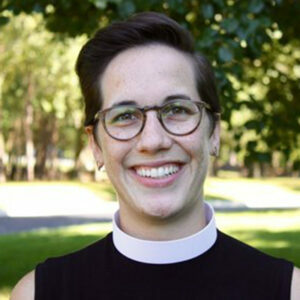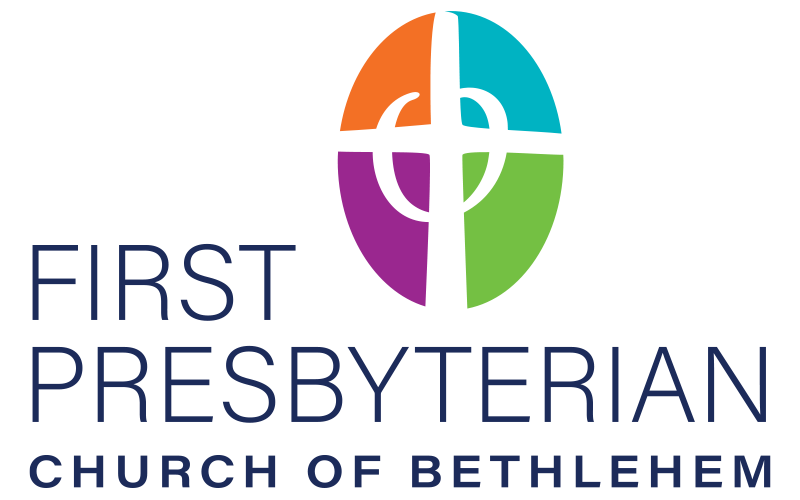We are all familiar with the preciousness of bedtime rituals – we read and sing to children and tuck them in with sweet words: “Good night, sleep tight, sweet dreams… I love you.” And even as grown-ups, we often crawl into bed for a few quiet minutes to read or to hold our spouse close before turning out the light. We come again and again to these bedtime rituals to calm our anxieties and ease ourselves into darkness.
Many of us have encountered a broad theological belief that  darkness is evil, scary, and just plain bad. And gradually-growing light shining in the darkness is one of the primary metaphors and worship experiences of Advent as we light the wreath candles each week and sing “Silent Night” by candlelight on Christmas Eve.
darkness is evil, scary, and just plain bad. And gradually-growing light shining in the darkness is one of the primary metaphors and worship experiences of Advent as we light the wreath candles each week and sing “Silent Night” by candlelight on Christmas Eve.
From the moment God declared, “let there be light,” we have too often christened light and condemned darkness. We pray “Be our light in the darkness, O Lord” and we sing “When we’ve been there ten thousand years/ Bright shining as the sun.” The message we send is hard to miss: if you are in the dark, you are not with God. (paraphrase, Elizabeth Dias)
But what if there is more to darkness than that? And what if the call to prepare the way of love and build a foundation of peace insists on us reorienting our relationship with darkness?
In fact, darkness has often been the setting for humanity’s closest encounters with the divine. In Genesis, darkness existed before God even began work in creation. Everything was made by God from dark. God appeared to Abraham in the night and promised him descendants more numerous than the stars. Hagar and Ishmael are saved by the desert’s shade and shadows.
The exodus from Egypt happened at night. God met Moses in thick darkness atop Mount Sinai to hand down the Ten Commandments. The apostle Paul’s conversion happened after he lost his sight and was plunged into visual darkness. Even today’s priest, Zechariah, learns his wife will bear a child in her old age in the dimness of the sanctuary of the Lord.
And of course Jesus was born in the dark, beneath a star, and the resurrection happened in a darkness of a cave. God and darkness have been friends for a very long time.
There’s so much that happens in the dark that is essential to the Christian story, especially in this season when “we put all our hope in the sacred blackness of a womb….In Advent, we reclaim the holy dark” (Cole Arthur Riley). In Advent, we wait with God in the darkness, trusting that something new and transformative will be born soon and very soon.
If we, too, hear Zecheriah’s tender, bold blessing and call to his infant son John to prepare the way of the Lord who guides our feet into the way of peace, our faithful living calls us to follow such a path, as well. If we long for the foundation of God’s loving, peace-filled kindom in our world, if we long to be closer to God’s intended home and shalom here and now, then we must take up an identity as peacemakers.
Not merely peace-keepers who are conflict avoidant and silent in the face of injustice and wrongdoing, but peace-makers: people actively committed to creating change and seeking liberation for all. Not a kingdom marked by power, privilege, and inequality, but a kin-dom in which kinship, community, and flourishing are freely accessible to all. For peace-making and kin-dom building is God’s holy work, and Zechariah reminds us of that in his song of praise, breaking the narrative flow of the story unfolding in Luke to lay the prophetic, peace-filled foundation for his newborn son’s ministry and ours today.
God has raised up a mighty savior for us that we would be saved from our enemies and from the hand of all who hate us.
Thus God has shown the mercy promised to our ancestors, and has remembered God’s holy covenant, to grant us that we, being rescued from the hands of our enemies, might serve God without fear, in holiness and rightousness before God all our days.
With these words, the once mute and disbelieving prophet, speaks with renewed faith and imagination about what’s possible for God’s people: Zechariah takes us back to Old Testament liberation stories. For those encountering Luke’s gospel in that historic moment and for us in our own contemporary violence-laden world, the vision and call to be a community bearing the image of peace is a counter-cultural one. Interestingly, Luke’s gospel uses the word peace more than all three of the other gospels combined. As one scholar notes:
By the time of Luke’s Gospel, the Romans have destroyed the Jerusalem Temple, and news about Jesus has begun to spread beyond Palestine to pockets around the Roman Empire. In that context, no less than in the decades earlier when Elizabeth and Mary were preparing to give birth to their sons, the message of God’s peace comes to a world more practiced at the art of warfare than it is at the craft of reconciliation (cf. Luke 19:42). God’s peace stands in striking contrast to the peace of the Roman Caesars, during whose reign John and Jesus are both born and executed. (Dr. Audrey West).
Friends, through the stories of Zechariah and John, we are called to prepare the way of Jesus, to be guided by God’s love down the path of peace. It is a new foundation to build if we are to create a home of shalom on earth as it is in heaven. Indeed, God walks with us and calls us to name and reorient the world’s foundation of aggression with a foundation of faith-filled peacemaking. We are to be witnesses whose lives proclaim that laws of fear and preservation of power and wealth don’t guide us. Instead, we follow the way of Jesus, the Prince of Peace, and we’re guided by laws of vulnerability and authenticity, called to preserve compassion and share abundance—all of which generate love, forge justice, and create peace.
This year, for me it is impossible to think of such shalom without thinking of the ongoing violence against the Palestinian people and increasing cries for a ceasefire. As of late last week, over 7,860 Palestinian children in Gaza have been killed since Oct. 7, a staggering 44% of the more than 17,700 casualties. More than 25,000 Palestinian children have lost one or both parents, and 1.8 million people are displaced as winter and starvation continue to take their toll, as well.
We continue to hear of the Israeli Defense Forces’ indiscriminate actions and continued violation of the rules of war established by the Geneva Convention— their ongoing bombing of hospitals, schools, and homes, which both target and disregard civilian life; blockades on humanitarian aid coming in and safe passage for civilians to flee; and the imprisonment and torture of Palestinian detainees (even before the Oct. 7 Hamas attacks). According to the Associated Press, in 2 months Israel has wreaked more destruction than the razing of Aleppo in 2012 and 2016, Ukraine’s Mariupol, or proportionally, the Allied bombing on Germany in WWII. It has killed more civilians than the U.S.-led coalition in its 3-year campaign against ISIS.
As people of faith called to peace-making, we should be deeply troubled not only by these realities, but by the American government’s role in funding and resourcing the IDF. While we can’t delve into the complexities of Middle Eastern history and nuances of international politics here, we can and should be paying attention to and speaking out against the war crimes unfolding with U.S. support despite clear votes from nearly every other country in the United Nations to move toward a ceasefire.
We also can and should be differentiating between anti-Semitism (which is always wrong) and anti-Zionism, opposing the political ideology which resulted in the colonization of Palestine and the ongoing genocide unfolding there. Organizations like Jewish Voice for Peace continue to educate, advocate, organize, and demonstrate against these atrocities being committed in the name of all Jews, and their work has been incredibly powerful and moving.
To be clear, the indiscriminate nature of Israel’s attacks is also not limited to Palestinian Muslims: a week ago, three escaping Israeli hostages waving a white flag were killed by the IDF; two Christian women sheltering in a church in Gaza were murdered by IDF snipers; and the Gazan convent of the Missionaries of Charity (founded by Mother Teresa) was bombed, leaving 54 persons with disabilities displaced without access to the respirators that some need to survive.
In the face of all this, Christmas in Bethlehem has been cancelled. Palestinian pastor, Rev. Munther Isaac, of Christmas Lutheran Church Bethlehem first started the calls for Palestinian Christian to observe Christmas without the usual frivolity and cheer, but instead to observe it with solemnity and simplicity in solidarity with the suffering of their mostly Muslim siblings under attack in Gaza. Images of his church’s manger scene have inspired other depictions of the Christ child and Holy Family that are powerful in their call to us. So I’ll invite us to see these images and hear some words from Christian leaders reflecting on the meaning of this particular Christmas given what is unfolding in Palestine:
___________
Rev. Munther Isaac:
The Child under the rubble. Immanuel God is with us in our pain and suffering. God in solidarity with the oppressed. The child of Bethlehem is our hope. For the children of Gaza and all victims of wars.
In Gaza today, God is under the rubble. God is in the operating room. If Christ were to be born today, he would be born under the rubble. We see his image in every child killed and pulled from under the rubble. In every child in incubators.
Holy Family (AI Generated image)
Rev. Traci Blackmon, most recent Associate General Minister of Justice with the UCC: “The reality of that Christmas morn of so long ago was that of a Jewish baby born in transit because of the political mandates placed on them under Roman occupation. A baby born with a bounty on his head to parents willing to do anything and flee to anywhere just to keep him alive…It was [about] community coming together to make certain the child of light was safe. It was about subversive resistance to governments that did not value the sanctity of every life for fear of losing power.”
Kelly Lattimore icon; Christ in the Rubble
How can we shape a culture of Christianity where love truly has no boundaries? How do we create a world where our poor, homeless, refugee, Palestinian Savior—born to a teenage mother and later condemned to death—would be cherished had he been born today?
___________
In the darkness and alongside God, we wait with hope for labor pains that will soon birth something long-awaited… Dear ones, as we seek to follow the way of love and build a kin-dom of peace, may we trust that God is powerfully present in the darkness just as God is present in the breaking dawn. In the words of Zora Neale Hurston, “They seemed to be starting at the dark, but their eyes were watching God.” May it be so, peacemakers. And may we be one such a source of God-in-the-dark transformation. This day and each day. Amen.
